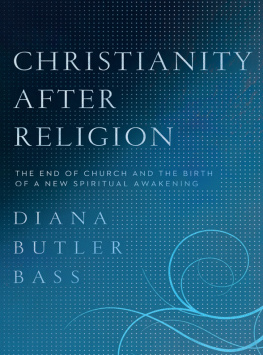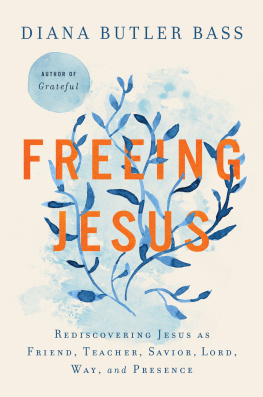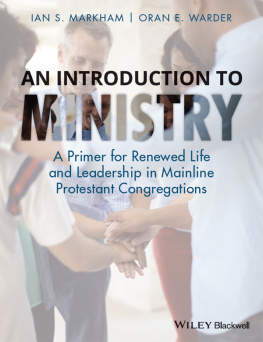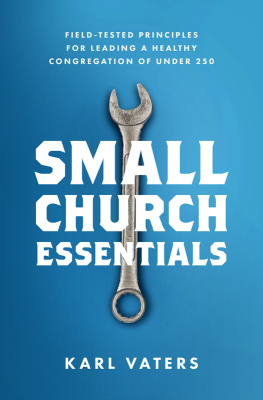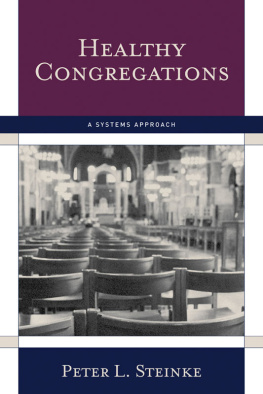From Nomads to Pilgrims
Copyright 2006 by the Alban Institute. All rights reserved. This material may not be photocopied or reproduced in any way without written permission. Go to www.alban.org/permissions.asp or write to the address below.
The Alban Institute
2121 Cooperative Way, Suite 100
Herndon, VA 20171-3025
Scripture marked M ESSAGE is taken from The Message by Eugene H. Peterson, copyright 1993, 1994, 1995, 2000, 2001, 2002. Used by permission of NavPress Publishing Group. All rights reserved.
Scripture marked NIV is taken from the HOLY BIBLE, NEW INTERNATIONAL VERSION. NIV. Copyright 1973, 1978, 1984 by International Bible Society. Used by permission of Zondervan. All rights reserved.
Scripture marked NKJV is taken from the New King James Version. Copyright 1982 by Thomas Nelson, Inc. Used by permission. All rights reserved.
Scripture marked NRSV is taken from the New Revised Standard Version of the Bible, copyright 1989, Division of Christian Education of the National Council of the Churches of Christ in the United States of America. Used by permission. All rights reserved.
Cover design by Adele Robey, Phoenix Graphics.
Library of Congress Cataloging-in-Publication Data
From nomads to pilgrims : stories from practicing congregations / edited by Diana Butler Bass and Joseph Stewart-Sicking.
p. cm.
Includes bibliographical references.
ISBN-13: 978-1-56699-323-4
ISBN-10: 1-56699-323-7
1. ParishesUnited States. I. Bass, Diana Butler, 1959- II. Stewart-Sicking, Joseph.
BV700.F76 2006
277.3083dc22
2005035338
10 09 08 VG 3 4 5
To the people and pastors of the churches that participated in the Project on Congregations of Intentional Practice. Thank you for all you taught usand most especially for becoming our friends.
C ONTRIBUTORS
D IANA B UTLER B ASS directed the Project on Congregations of lntentional Practice, a Lilly Endowment-funded study of mainline Protestant vitality at the Virginia Theological Seminary in Alexandria, Virginia. She is the author of The Practicing Congregation: Imagining a New Old Church (Alban, 2004).
S COTT A. B ENHASE is rector of St. Philips Episcopal Church in Durham, North Carolina.
K ENNETH H. C ARTER , J R ., is senior pastor of Providence United Methodist Church, Charlotte, North Carolina. Previously he served as pastor of Mount Tabor United Methodist Church in Winston-Salem, North Carolina. He is the author of A Way of Life in the World: Spiritual Practices for United Methodists (Abingdon Press, 2004).
L ILLIAN D ANIEL has been senior minister of First Congregational Church in Glen Ellyn, Illinois, since 2004. From 1996-2004, she was senior minister of Church of the Redeemer (UCC) in New Haven, Connecticut. She is the author of Tell It Like It Is: Reclaiming the Practice of Testimony (Alban, 2005).
T ODD M. D ONATELLI has served as dean of the Cathedral of All Souls (Episcopal) in Asheville, North Carolina, since 1997. He has written a variety of published articles.
E RIC E LNES is senior pastor of Scottsdale Congregational United Church of Christ in Scottsdale, Arizona. He is a biblical scholar, teacher, and speaker and is the author of The Seven Deadly Sins in the Igniting Worship series (Abingdon Press, 2004).
P AUL E. H OFFMAN is lead pastor of Phinney Ridge Lutheran Church in Seattle, Washington. He served congregations in Texas and Nebraska prior to his ministry at Phinney Ridge.
S TEVE J ACOBSEN is senior pastor at Goleta Presbyterian Church in Santa Barbara, California. He is the author of Hearts to God, Hands to Work: Connecting Spirituality and Work (Alban, 1997) and articles exploring spirituality, leadership, work, and digital technology.
G ARY D. J ONES is rector at St. Stephens Church in Richmond, Virginia, and previously was rector of Church of the Holy Communion in Memphis, Tennessee.
J. M ARY L UTI is the senior minister of First Church in Cambridge, Congregational, United Church of Christ, in Harvard Square (Cambridge, Massachusetts), one of the oldest continuing congregations in North America. She is the author of Teresa of Avilas Wtty, a volume in The Way of the Christian Mystics series (Liturgical Press, 1991).
T IMOTHY S HAPIRO is the president of the Indianapolis Center for Congregations, a supporting organization of the Alban Institute funded by Lilly Endowment, Inc. For fourteen years he was the pastor of Westminster Presbyterian Church in Xenia, Ohio.
N. G RAHAM S TANDISH is pastor of Calvin Presbyterian Church in Zelienople, Pennsylvania. He teaches and leads workshops in the areas of spirituality and congregational leadership. His most recent book is Becoming a Blessed Church: Forming a Church of Spiritual Purpose, Presence, and Power (Alban, 2005).
J OSEPH S TEWART -S ICKING served as project associate for the Project on Congregations of Intentional Practice.
R OY T ERRY is pastor of Cornerstone United Methodist Church in Naples, Florida.
P REFACE
Not long ago, I was at Trinity Church, Wall Street, one of the oldest churches in the United States, and the church that sits right on the edge of the site of the World Trade Center. Since September 2001 the congregation has seen more than two million visitors a year pass through its historic doors. The clergy and I were talking about spiritual tourists-the throngs of people who journey to the church to understand the devastating events of the terrorist attacks. They are the unmoored, nomads in a fractured world trying to make spiritual and theological sense of the changes, violence, suffering, and war that have engulfed us.
Ive got tourists galore, sighed the Reverend Dr. Jim Cooper, Trinitys senior clergyperson. They come. They come in droves. But I dont want them to leave as tourists. I want them to become pilgrims. I want them to connect, to know that there is something more.
Although not many other churches have two million tourists a year, Trinity is not necessarily unique. In effect, Jim Coopers words speak to all religious communities. Every church, synagogue, mosque, and temple in the United States sits among a throng of tourists-people on a journey of self-discovery. But simply being on a spiritual journey does not automatically mean that people will find meaning. Rather, as Cooper suggested, they need to connect and discover that journeys can become pilgrimages. Tourists can become pilgrims.
Trips and journeys are wonderful things. Every year I joyfully anticipate my familys summer vacation at the beach. That trip lasts only a week, however; and its sole purpose is to remove us from the stress of life in Washington. We are not trying to find a new way of life. Rather, we are seeking a change of scenery that gives us a perspective on our normal lives; rest and play that strengthen us for things back home. Being a tourist takes us outside of daily life, and when we are at the beach, we know that we experience the place in an entirely different way than do the year-round locals.
But what if, instead of our yearly trip, we moved in? Becoming a pilgrim means becoming a local who adopts a new place and new identity by learning a new language and new rhythms and practices. Unlike the tourist, a pilgrims goal is not to escape life, but to embrace it more deeply, to be transformed wholly as a person, with new ways of being in community and new hopes for the world. Being a tourist means experiencing something new; being a pilgrim means becoming someone new. Pilgrimages go somewhere-to a transformed life.


